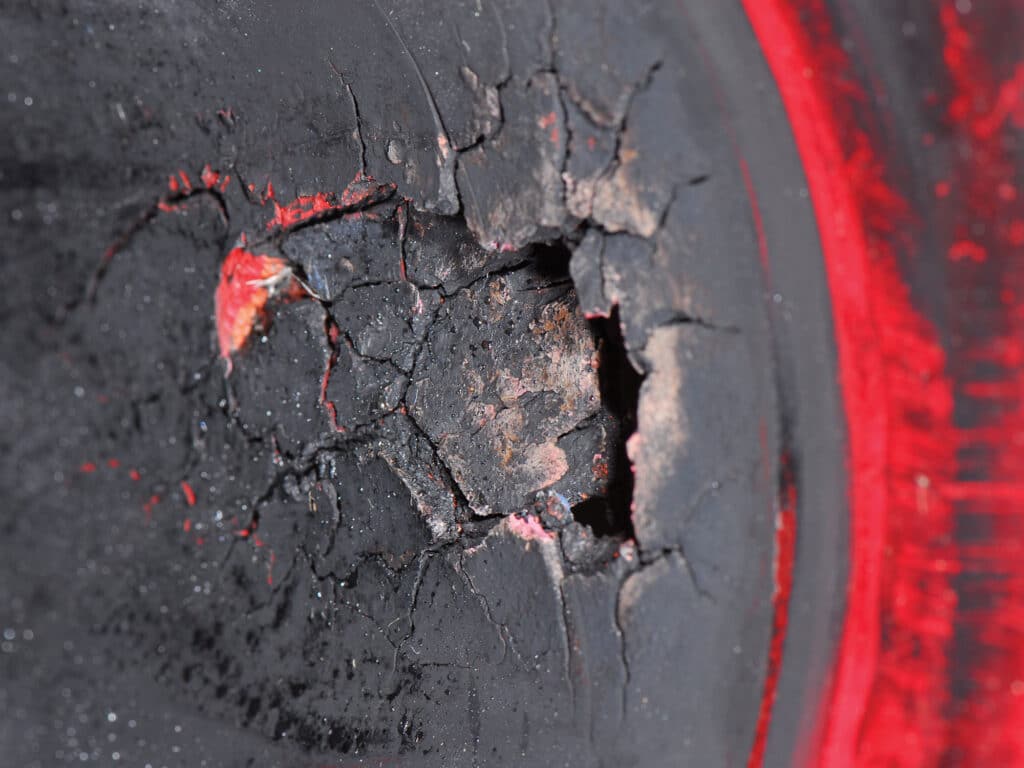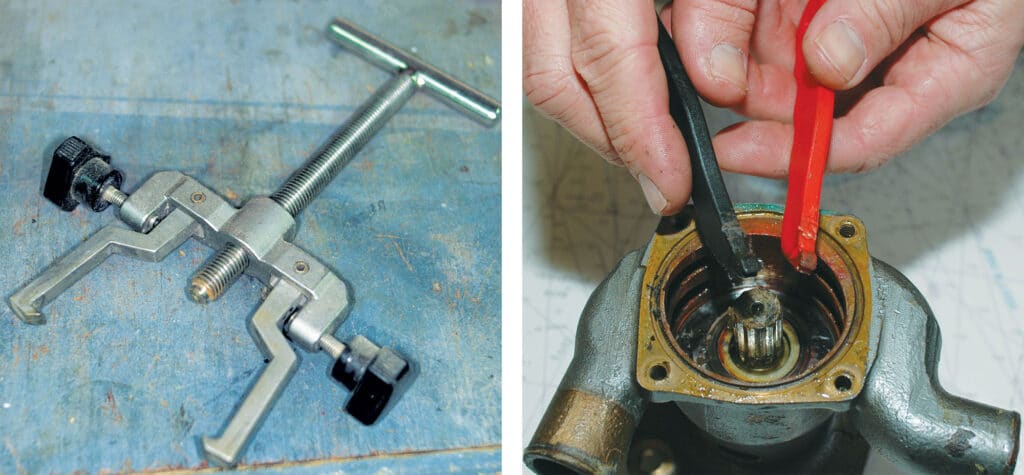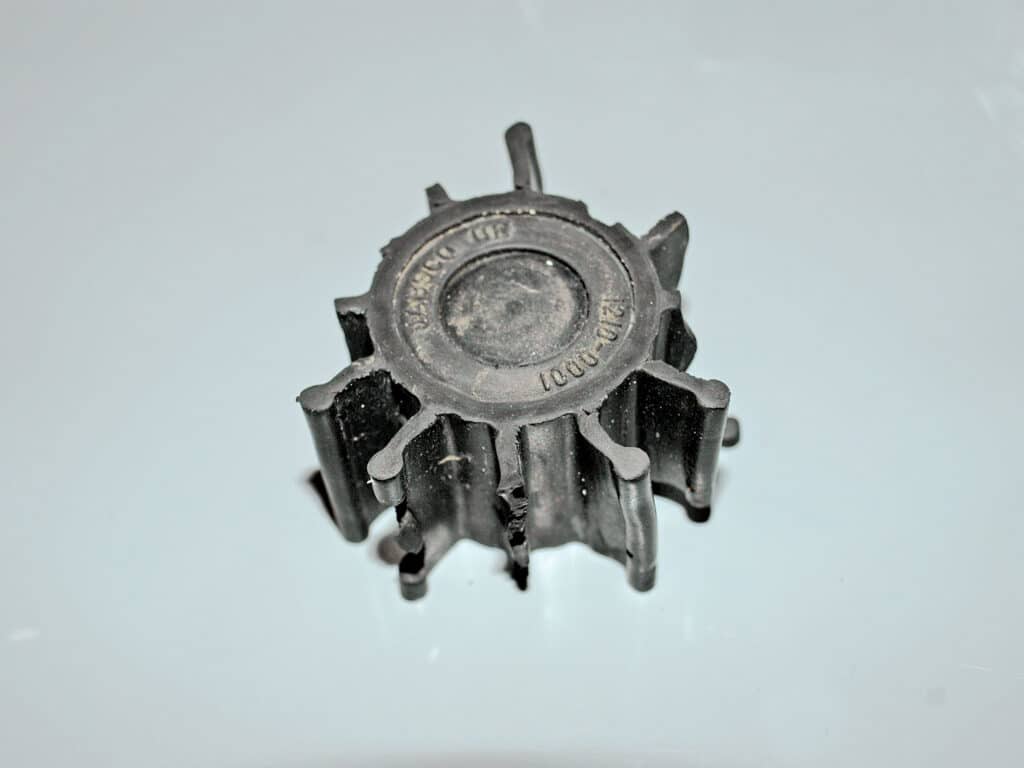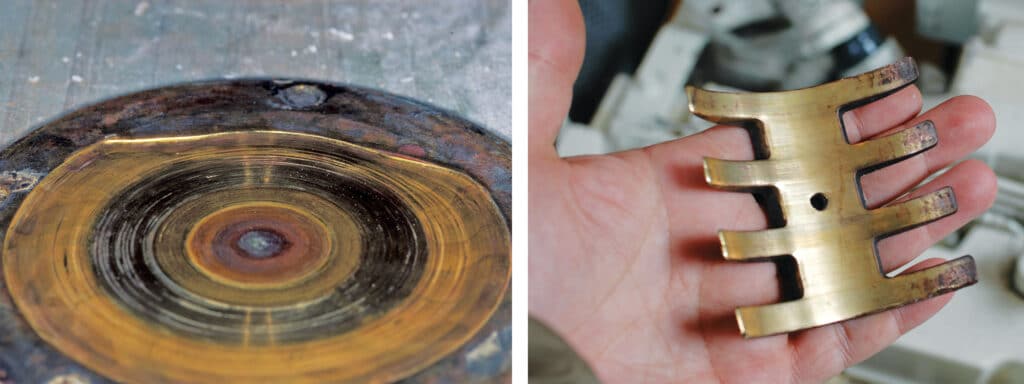
One of the most attractive aspects of a cruising lifestyle is independence. However, with that independence comes self-reliance. If you have a fire, you can’t call the fire department. If you get hungry, you can’t call for a pizza delivery.
While it helps with boating to be a mechanical and electrical expert, it is by no means a necessity to cruise safely and enjoyably. However, you must be able to perform certain tasks, including the replacement of fan belts, fuel filters and impellers (and raw-water pumps). You must also be able to bleed air from the fuel system.
Fan-belt service was covered in a recent column, so let’s have a look at raw-water pumps. These pumps use a flexible rubber impeller to move seawater through the heat exchanger, where the seawater absorbs heat from the engine’s coolant. From there, the water moves to the exhaust mixing elbow, where it cools the hot exhaust gases, and then goes overboard.
This is important: Without cooling water, the exhaust hose and muffler will overheat, often faster than the engine itself. If you suffer an overheat, be sure to inspect the exhaust hose and fiberglass or plastic mufflers for damage.
I’m a firm believer in preventive maintenance, and it is my strong recommendation that impellers be replaced annually or every 600 hours, whichever comes first. In fact, because some of the blades are always compressed—and because deformed, disused or lightly used impellers can suffer more-frequent failure than those in regular service—this preventive maintenance is something that I consider a requirement. Impellers are relatively inexpensive, and replacing them virtually ensures that, short of a clogged intake, you will never have a premature impeller failure.

When replacing impellers, resist the temptation to pry out the old impeller using a screwdriver. Most pump bodies are made from relatively soft brass and are easily damaged. Typically, you’ll damage the cover-plate sealing surface, which in turn leads to air or water leaks. Instead, use an impeller puller or a plastic pry bar.
Once the impeller is removed, inspect it for lost blades. If any are missing, you’ll have to go looking for them “downstream.” In most cases, they’ll be stuck at the inlet side of the heat exchanger.

Then, look carefully at the pump’s cam. This is a crescent-shaped device over which the impeller blades ride and are deformed, which in turn creates the pumping action. The cam too is made from brass, so it will wear away (and dezincify) over time. If it wears enough, pump capacity can be reduced or stopped altogether. Often, the wear is noticeable only when comparing the old cam with a new one, so it’s a good idea to have a replacement on hand.
Use caution when replacing the cam. The securing screw is small and easy to drop into the bilge. Also be sure to retain and reuse, or replace, the sealing washer.

The cover plate should also be inspected at this time. While discoloration on the side that bears against the impeller is normal, any discernible wear, if you can feel a ridge, is too much. The plate should be replaced.
Plates without embossed writing on the outside face can often be reversed to double their life. Like the cam, if the cover plate wears too much, the impeller seal will be compromised; it might lose suction and stop pumping.
Steve D’Antonio offers services for boat owners and buyers through Steve D’Antonio Marine Consulting stevedmarineconsulting.com.








